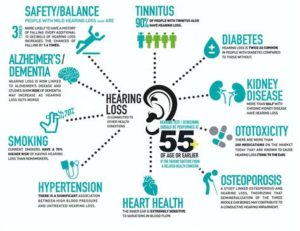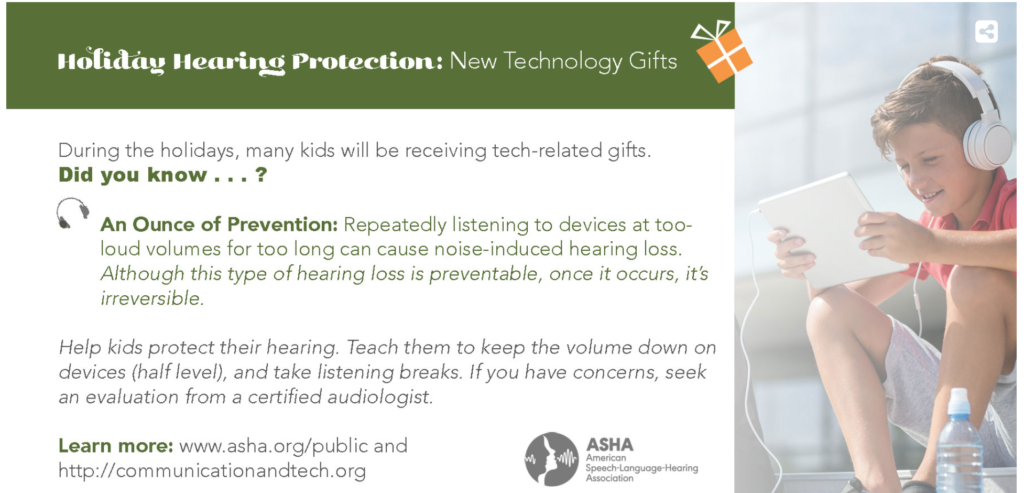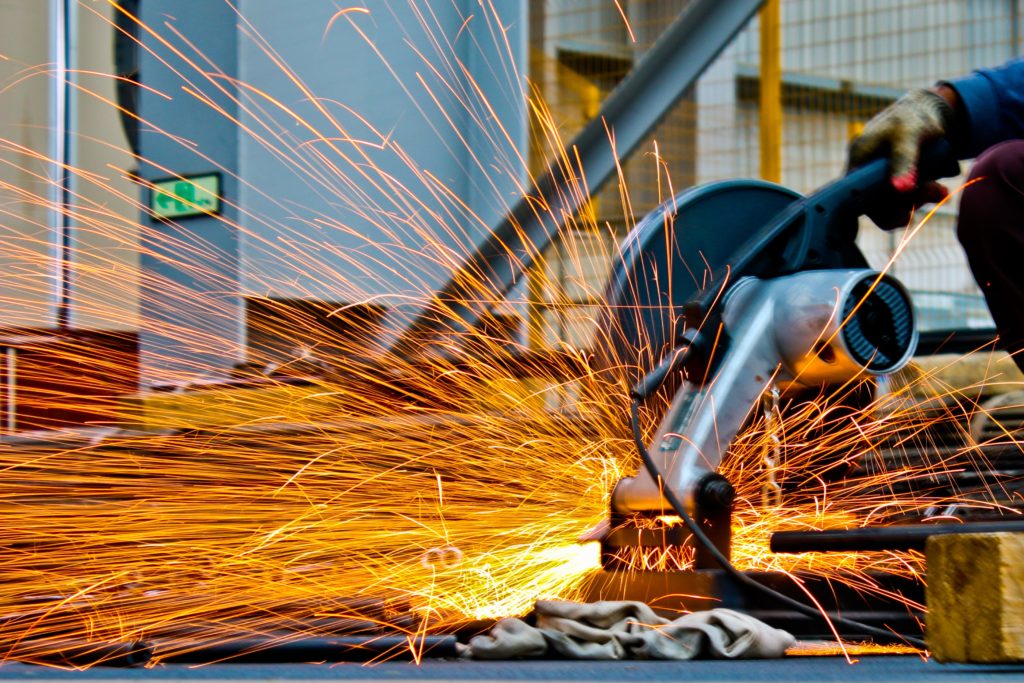Millions of workers are exposed to hearing hazards every year, and even though OSHA regulations and NIOSH recommendations in the U.S. specify hearing protection, occupational hearing loss is still the number one reported worker illness in manufacturing*. Moreover, noise-induced hearing loss is permanent and irreversible, but avoidable with the help of proper hearing protection and other measures. Here we will explore some hearing protection devices (HPD) and other steps that can be taken to help protect workers’ hearing in a wide variety of industries.
Earplugs & Custom Hearing Protection
When workers are exposed to loud noise, earplugs can offer low-cost, effective hearing protection. These are soft foam or elastic plugs worn inside the ear canal to help block out hazardous sounds. Earplugs come in a wide variety of shapes and sizes so there are many choices for workers. With the right fit and insertion techniques, earplugs can provide adequate protection for many types of noisy situations.
Disposable foam earplugs are the most widely used type of HPD. The soft foam is rolled into a tightly compressed cylinder then inserted into the ear so that it conforms to the unique shape of ear canal. They are relatively low price per pair and can result in a high noise reduction when worn correctly.
Push-to-Fit earplugs are soft foam tips with a flexible stem where there is no need to roll down the foam tips before inserting into the ears. This works well for employees who have difficulty rolling and inserting disposable foam earplugs and can even be inserted when hands are dirty or when wearing gloves. Though earplugs are the fast easy solution they are not exactly the best product for the environment and everyday usage can be costly in comparison to custom hearing protection.
Reusable earplugs also known as Custom Hearing Protection are washable with flexible, such as the dB Blocker™.

Also, metal detectable earplugs have a stainless-steel bead encased in the earplug. Popular in food manufacturing industries when contamination prevention is critical, this type of HPD is available in a variety of comfortable earplug styles to meet most wearer preferences
and help address a variety of environmental noise hazards. Metal Detectible dB Blocker™ hearing protector devices are for industries such as food and pharmaceutical manufacturing. Our Metal Detectible dB Blockers™ have been tested by a wide range of metal detection equipment. Learn More
Earmuffs
One of the easiest hearing protectors to wear, earmuffs can quickly be adjusted to provide a snug and reliable fit for a wide range of ear and head sizes. Since earmuffs can be less complicated to put on correctly, most users can intuitively learn to wear them. Additionally, earmuffs allow workers to easily put their hearing protection on and take it off throughout the day as needed.
Earmuffs can be reused time and again, and, if properly cleaned, maintained, and stored, can typically be worn up to two or three years. Also, given the size, they are harder to lose than other hearing protectors. This means you may not need to replace earmuffs as often as other types of hearing protectors. Additionally, the easier and more comfortable personal protection equipment is, the more likely employees may be to wear it. Moreover, because earmuffs are can be easier to see from a distance, it may also be easy to monitor that workers are wearing hearing protection.

Advanced Hearing Protection
Advanced Hearing Protection Solutions can help keep the workers’ hearing protected while enabling them to clearly communicate and hear their surroundings. There are two categories of Advanced HPDs: Protective Hearing Solutions and Protective Communication Solutions.
Protective Hearing Solutions allow you to hear normally when it’s quiet and provide protection when it’s loud. This type of HPD can be effective when:
- There is intermittent, varying, and/or unpredictable noise
- Workers are tempted to remove their hearing protection to communicate
- Enhanced situational awareness is desired, e.g. moving vehicles are present, alarms need to be heard, for maintenance personnel
- Workers move between loud and quiet areas
- Sometimes, workers may also need hearing protection that can allow them to clearly communicate in noise.
These Protective Communication Solutions can help when:
- People are wearing hearing protection and carrying two-way radios
- People are trying to talk on their mobile phone in noise
- People need to shout into each other’s ears to communicate
Hearing Conservation Program
Employers in the U.S. are required to provide a “continuing, effective hearing conservation program” for employees who are exposed to hazardous noise, according to U.S. OSHA. You can advance your hearing conservation program with a customized and comprehensive approach to providing hearing protection. Implementing a solution that really makes a difference begins with an understanding of the hazards, the regulations, and the factors that impact hearing protection. Your program should also take into account the seven elements of hearing conservation.
Measure
Accurate measurement of employee exposure to hazardous noise is essential. Conducting noise surveys using appropriate detection instruments can help you identify who is at risk, determine who needs to be included in your program, and select the proper controls and protective equipment to help reduce the risks.
Control
Certain operations and machinery create high noise levels. But do they have to? Equipment and processes can be designed or altered to be quieter, reducing the number of employees in your conservation program.
Protect
Hearing protectors play an important role in hearing conservation. They must be comfortable, fit properly, and provide adequate protection for the environment. Compatibility with other PPE and the workers’ ability to communicate must also be considered. Including individual fit testing of earplugs and earmuffs in your program can help you educate your employees on the importance of hearing protection and validate the Personal Attenuation Rating (PAR) achieved by each worker.
Check
Are your employees showing symptoms of noise-induced hearing loss? It’s important to routinely use standardized measurement procedures to check their hearing to detect and record changes, so you can take steps to prevent permanent hearing loss.
Train
Because noise-induced hearing loss usually happens gradually and the symptoms are not always apparent, it is vital to educate employees on the effects of exposure to loud noise and train them to properly use hearing protection. You may be able to improve the success of your hearing loss prevention efforts by strengthening worker training and motivation programs.
Evaluate
Make sure your hearing conservation program is working with regular program evaluations that include employee feedback, responsibility reviews, and cost analysis. This will help identify trends, highlight potential problem areas, and drive improvement.
Fit Testing
Fit testing can deliver an objective, quantitative measurement of each employee’s hearing protection, so you can help better protect your workforce while also helping employees understand the importance of proper fit.
FITCHECK SOLO™
Developed by NIOSH and distributed by CPE and ProtectEar USA, FitCheck Solo™ is fast, accurate and simple
SIMPLE SOLUTIONS: Training and fit testing takes less than 10 minutes and it can be done right on the line*. Fit Testing devices such as FitCheck Solo™ provides ease-of-use and real-time testing. Learn more.

Fit testing can further help employers because it:
- Is fast, quantitative, and objective
- Helps measure the wearer’s personal attenuation rating (PAR) with particular hearing protectors
- Allows for the opportunity for training to help promote effective fit and
- Provides documentation for compliance reporting
- A proper hearing conservation program is meant to help measure, control, protect, check, train, record, and evaluate.
Hearing Conservation Manager Digital Programs
It might be in a safety manager’s best interest to invest in a digital system, where hearing conservation managers can track for each worker the results of fit testing, the noise exposure levels experienced given a specific work environment and keep track of overall hearing health data over time. This data can help with selecting the appropriate hearing protection based on exposure in a particular work environment and keeping track of what hearing PPE inventory is needed for the work force.
Using a digital system to gather and store information on how PPE is used in the workplace can help promote regular maintenance for certain PPE assets, as well as help improve the hearing program, overall operations, and safety culture. This may lead to enhanced productivity, compliance, and confidence by workers who feel they are properly feel protected.
People like options. When their personal preferences are considered, employees may be more satisfied and more invested in their work. Employees may wear hearing protection more of the time when they are allowed to choose HPDs that are compatible with their work. Selecting the most comfortable HPD from several options may also increase the likelihood that employees will wear them correctly. Through a well-defined hearing conservation program, safety managers, employers, and hearing conservation managers can help ensure workers are wearing the hearing protection that meets their needs.
SOURCE
https://www.ishn.com/articles/111403-hearing-protection-devices-and-solutions






















 and removal.
and removal. 